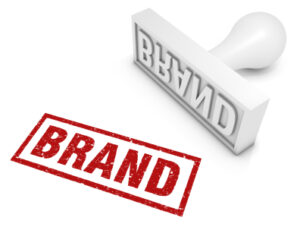 What is a brand, anyway? It seems like it is a mysterious “something-or-other” that isn’t marketing, isn’t PR, isn’t advertising. So if we know what it isn’t, shouldn’t we also know what a brand is?
What is a brand, anyway? It seems like it is a mysterious “something-or-other” that isn’t marketing, isn’t PR, isn’t advertising. So if we know what it isn’t, shouldn’t we also know what a brand is?
As the branding theorist Jacques Chevron has commented, a brand is an idea made up of everything you know, think, and feel about a product or service or a company. It is something that we cultivate to associate a need or desire with a service, product, etc. It saves us from having to do research from scratch anytime we want to buy something. In real terms, modern business (whether B2B or B2C) could not function without the ability that the concept and construct of “brand” provides us.
No one invented branding. Branding is a phenomenon, a process we do. Working with, protecting, extending, and using your brand image in marketing is actually what we do when we talk about “the process of branding.” Whether you are in public relations, a B2B marketer, or a B2C marketer, protecting your brand requires the same tactics:
Congruence: The things you do, the way your company behaves, the way you interact with customers before and after the sale should be highly congruent with what you say you will do, and how you present yourself in the market. The “cognitive dissonance” created when companies do not “walk the walk” is not only a PR blunder, but is the biggest brand-killer out there. Look at the way the airlines have defaced their brands by producing poorer service, more crowded seating, and later and later flights while continuing to trumpet themselves as “The Friendly Skies.”
Uniformity: Your brand image must be presented in the same way all the time, regardless of where you are. As the Internet drives us increasingly to a unitary global marketplace, this becomes a difficult balancing act. What you need to do is to make sure that you are presenting the concepts that underlie the brand you are projecting in ways that are appropriate to Sri Lanka, Belarus, Nova Scotia, or to Chicago. Chris Macrae (Brand Editor of the “Economist”) points out the strength of the Coca-Cola brand is based on the cultivated ability to do this.
Responsiveness: It is critical that challenges to your brand image be dealt with properly and swiftly. During the Christmas season of 2000, humane societies and dog rescue organizations around the country deluged Hallmark and Discover with complaints over commercials they’d run dealing badly with the subjects of dogs as Christmas presents. It is interesting to note that Discover responded negatively to these protests, while Hallmark responded cordially and proactively. Both of these reactions are components of brand.
Integrated: The products and services you provide, and the way you provide them and service them after the sale, must be presented in an integrated way. Branding should always be considered within a completely integrated marketing and sales strategy.
It is extremely important to point out that these issues don’t cost anything. They are strategic in nature, and can be accomplished with very little money, or gobs and bundles of it, depending on your preference. This means that small, niche businesses can benefit from, the same branding principles that Amazon can, without spending at the level of Amazon.
Established brands like Coca-Cola or J. C. Penny didn’t spend enormous amounts of PR money to achieve their powerful brand status. Brand, being an idea, grows over time.
In the end, it is a critical understanding that “nurturing a brand” is often mostly the discipline of refusing to do things to the brand that will result in negative effects.
This article, written by Walt Boyes, originally appeared in PR Fuel (https://www.ereleases.com/prfuel), a free weekly newsletter from eReleases (https://www.ereleases.com), the online leader in affordable press release distribution. To subscribe to PR Fuel, visit: https://www.ereleases.com/prfuel/subscribe/.
